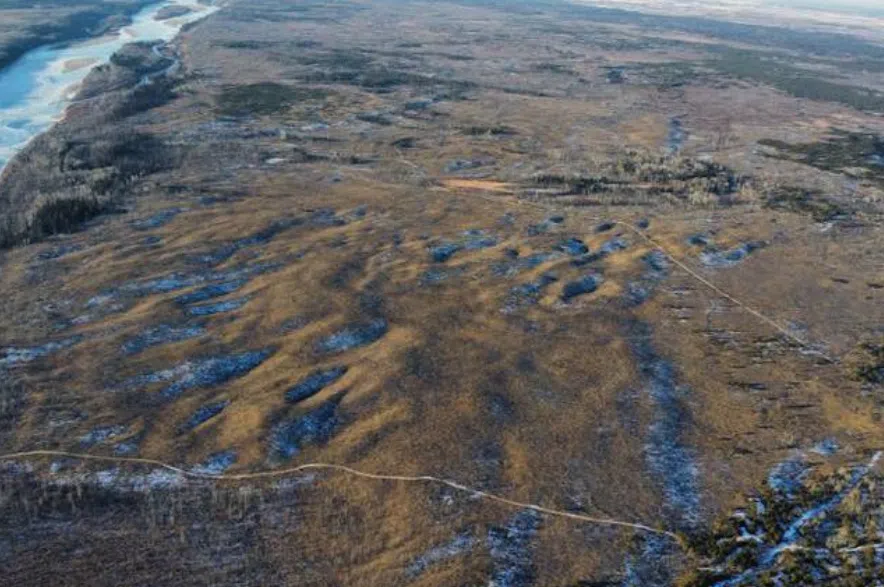As an important deadline approaches, concerned members of a forest protection group in the Prince Albert area are calling on the provincial government to extend a moratorium for clear-cutting in the Island Forests.
According to the Government of Saskatchewan, the Island Forests comprise the Canwood, Nisbet, Fort-a-la-Corne and Torch River provincial forests in north central Saskatchewan, with a total area of approximately 227,000 hectares.
Read more:
- Peter Ballantyne Cree Nation awarded $630 million in agriculture settlement
- Lac La Ronge Indian Band approves major settlement with federal govt.
- Government of Canada settles failed treaty promises in Saskatchewan
- Prince Albert continues down road to reconciliation with educational events
Over 60 people showed up at meeting last week at Crutwell Community Hall, representing Sturgeon Lake First Nation and Wahpeton Dakota Nation, as well as non-indigenous people who live and farm in the area.
“It was a beautiful thing to see,” said group spokesperson Dave Rondeau. “That area they are hoping to clearcut is utilized by everyone.”
Concerns with the government’s Island Forest Timber Harvest Operating Plan first came to light in January 2024 when over half a dozen people showed up at the forestry centre in downtown Prince Albert.
Representatives from the Ministry of Environment agreed to meet with them and spent roughly 30 minutes answering questions related to the plan and the potential impact to the areas around Holbein and Crutwell.
Roughly three months later, the provincial government announced a one-year moratorium.
Rondeau confirmed since the 2024 meeting, there’s been more concerned people coming forward, adding there’s been a real disconnect with the consultation framework and fears major decisions have already been made.
“The forest isn’t just that little section. What you do to one part of the forest, you do to all of it and by dividing it up — it’s like death by 1000 cuts,” he said.
Archaeological discovery points to ancient occupation
As well, an archaeological discovery in February 2025 revealed proof that Indigenous people occupied the area over 11,000 years ago.
Evidence suggests the site was a long-term settlement rather than a temporary hunting camp.
Findings included stone tools, fire pits, and lithic materials used in toolmaking. Charcoal layers indicate early Indigenous inhabitants practiced fire management, aligning with longstanding oral traditions.
The discovery of large bison remains provided insight into early hunting techniques and the evolution of the species.
“This discovery challenges the outdated idea that early Indigenous peoples were solely nomadic,” Dr. Glenn Stuart from the University of Saskatchewan said at the time.
“The evidence of long-term settlement and land stewardship suggests a deep-rooted presence. It also raises questions about the Bering Strait Theory, supporting oral histories that Indigenous communities have lived here for countless generations.”
“We have plans to utilize this territory, you know, for land based studies and the heritage content out there is absolutely irreplaceable,” Rondeau said.
Sam Badger, who has appeared in a number of movies and is a well respected Elder, noted the existence of both graves and artifacts that date back 11,000 years.
“(The clearcut) will erase all our history that we have there and erase our existence that we were ever there — so they are slowly erasing our people off Turtle Island basically is what they are doing,” he said
Badger said pre-contact, Indigenous people would take a section of land and do a traditional fire-burning ceremony. These practices have since been banned by both the B.C. and Saskatchewan governments.
“Look at B.C. … its now fire all over the place. We were traditional stewards of the land and we had all these ceremonies in place to look after the land, look after Mother Earth, and a lot of these things were stopped by the local governments and laws were made against us,” he said.
Noting how these forested lands in the Crutwell and Holbein areas are used for gathering berries and traditional hunting, Badger fears they will instead be replaced with bare desert.
Government says it is considering feedback
A statement from the Ministry of Environment confirmed that on March 19, it met with the Crutwell Métis Local regarding proposed 2025/2026 and 2026/2027 Forest Harvest Design and Reforestation Activities for the Island Forests Timber Supply Area.
“The ministry staff in attendance committed to take all feedback, including the moratorium request, back to be considered during its review period, which is still ongoing.”
In the absence of a single large forest licensee, the Ministry of Environment is responsible for long-term forest management planning, high-level operational plans, and forest renewal for the Island Forests. Public engagement is an important part of each level of planning.
“The ministry welcomes all input, including traditional knowledge and local information about the potential impact of the proposed plans, as they are developed, it said.
“The Government of Saskatchewan is committed to fulfilling its legal duty to consult with First Nation and Métis communities before making decisions that may affect the exercise of Treaty or Aboriginal rights, following the government’s consultation policy framework.”
The statement also noted the ministry’s overall goal is to maintain the long-term health and sustainability of Saskatchewan’s forests, balancing economic, ecological and social considerations.
— by Nigel Maxwell, with files from CKOM News
Read more:







